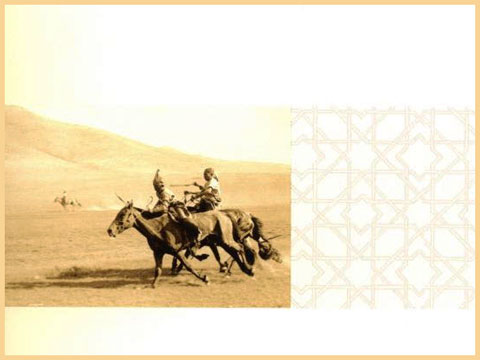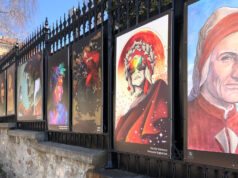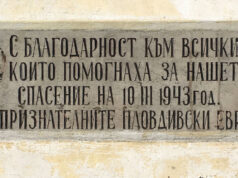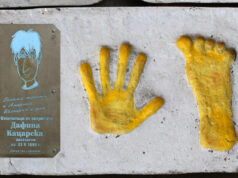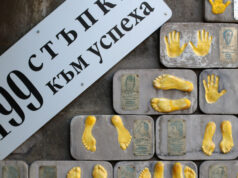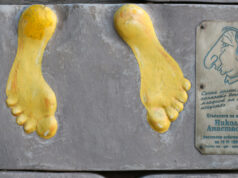In Eastward to Tartary, Robert Kaplan picks up where he left off at the end of his now famous post-communist missive, Balkan Ghosts. Launching from Hungary, Kaplan winds his way across Romania and Bulgaria and on into Turkey, from where he first turns south into the heart of the Middle East, and later east along the Silk Road all the way to Turkmenistan. Along the way he weaves together history and current events in a pattern that makes sense to the western eye and ear.
Timing and Utility of the Travels
Kaplan’s travels occurred in the late 1990’s, and he wrote with an eye towards the first decade of the 21st century, so by now his experiences are a bit dated, but not so much, since these are lands where the wheels of history turn slowly. Stories routinely reach back centuries, and deep rooted memories, divisions, and prejudices stand front and center on the world stage. Kaplan proves once again a prescient observer of the lands he travels, and his observations are worth reading even though his intended time horizon is already long past.
The book is a survey of current affairs in what Kaplan calls the New Near East, encompassing the countries lying east of the pre-expansion European Union, including Turkey and the Central Asian republics commonly called “the Stans.” He points out that this area possesses 70 percent of the world’s proven oil reserves, and 40 percent of its natural gas, a simple fact leading Kaplan to suggest it might become “the seismograph of world politics” in the first decade of the 21st century. Almost as an afterthought Kaplan adds a note about the Caucasus and Central Asia being added to the responsibility of the U.S Central Command, “the closest thing the U.S has to a colonial-style expeditionary force.” His observations provide interesting highlights in the aftermath of what turned out to be a decade of war.
The Journey From Beginning to End
Starting in Romania, Kaplan finds a land slowly changing, yet still falling further behind its western neighbors. Conversations with Gheorghe Funar,the ultra-nationalist Mayor of Cluj, Stalinist Sylviu Brucan, President Emil Constantinescu, and General Costache Codrescu create a montage of contrary opinions highlighting the difficulty of reform in a country that never really achieved success as a modern state. The juxtaposition of poverty versus wealth, fear versus expectation, or east versus west leaves Kaplan hoping for western integration to clear a smoother path into the future, and wary of the alternative.
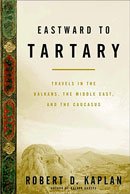 In Bulgaria, Kaplan finds a country of facades masking the true color of society. Geopolitically, he observes that, “America had now assumed the former Soviet Union’s role, becoming “the big bear protecting it against the surrounding wolves.” His observations of Peter Stoyanov are telling of the conscious decisions taken in Bulgaria turning westward, placing all of their chips on NATO and Europe. Kaplan identifies the biggest fear as possibly being forgotten by the rest of Europe.
In Bulgaria, Kaplan finds a country of facades masking the true color of society. Geopolitically, he observes that, “America had now assumed the former Soviet Union’s role, becoming “the big bear protecting it against the surrounding wolves.” His observations of Peter Stoyanov are telling of the conscious decisions taken in Bulgaria turning westward, placing all of their chips on NATO and Europe. Kaplan identifies the biggest fear as possibly being forgotten by the rest of Europe.
Socially, Kaplan identifies all of the usual Bulgarian problems, from organized crime to Roma exclusion, which he calls a “ticking time bomb” that must be addressed. Sofia is a booming capital city surrounded by rural poverty. Quoting academic Ognyan Minchev, Kaplan acknowledges the current situation: “There is official democracy. The question is, what lies behind it?” for Kaplan, the biggest challenge of the next ten years are to “lock Bulgaria permanently into the Western alliance.”
Moving on to Turkey, the most useful observation Kaplan makes is the rising influence of the Islamist Party, which he identifies as the only political force advocating real democratization of the country. The problem with that, according to Kaplan, is their desire to overthrow Ataturk’s secular republic, which will lead them into direct conflict with turkey’s military strongmen, the self-proclaimed protectors of Atatürk’s secular legacy. Future President Abdullah Gül tells him, “the military will be isolated if it tries to direct the future.” In uncharacteristic fashion Kaplan dismisses the threat, and, as we now know, history has proven Gül right.
Kaplan calls Syria “a tragedy of twentieth century politics” which has brought out the very worst of both capitalism and socialism. A made up state, Syria is a country without a soul, held together by sheer will and ruthless power. In order to maintain control, the Assad regime systematically eliminated all opposition, leaving the country without a dissident class capable of mounting any effective opposition. Today the world can only look on in despair as Syrian protesters scramble to organize into an effective revolutionary force against the ever more repressive regime. Kaplan’s words at least help us understand why the western powers have not acted more quickly to bring about change.
The journey into the Caucasus reveals a now familiar dichotomy, in which “one could be optimistic in the capital cities, but in the provinces one confronted the harshest truths.” The changes there have produced many of the same issues which Europe and NATO have forced the Balkan nations to address, except Central Asia lacks the proximity of Europe and the coercive power dangled riches have over leaders on the ground. Kaplan describes the situation as “a sprinkle of globalization with criminal overtones over a carcass of Soviet era poverty.” He concludes, “There may be no crueler kind of capitalism than the post-communist variety.”
Summarizing his impressions, Kaplan says that western calls for Democracy ring hollow unless accompanied by a commitment to engage in the years of hard work necessary to forge real change in this part of the world. Almost fifteen years on, the process seems still just getting underway.
Bibliographic entry:
Kaplan, Robert D. Eastward to Tartary (New York: Random House), 2000.
Table of Contents:
Author’s Note
Part I: The Balkans
1. Rudolf Fischer, Cosmopolitan
2. Heading East
3. The Widening Chasm
4. Third World Europe
5. Balkan Realists
6. Pivot State
7. “Civilizational Choice”
8. Wrestlers Versus Democrats
9. The Legacy of Orthodoxy
10. “To the City”
Part II: Turkey and Greater Syria
11. The “Deep State”
12. The “Corpse in Armour”
13. The New Caliphate
14. The Sacred and the Profane
15. The Corporate Satellite
16. The Caravan State
17. Crossing the Jordan
18. Sepphoris and the Renewal of Judaism
19. Throbbing Heart of the Middle East
Part III: The Caucasus and Tartary
20. To Turkey’s Northeastern Border
21. Stalin’s Beautiful Homeland
22. Fossil Nations
23. From Tbilisi to Baku
24. Imperial Collisions
25. By Boat to Tartary
26. New Khanates
27. A Herodotean Landscape
Epilogue: Hayastan
28. Earth, Fire, Water
Acknowledgments
Notes
Index


